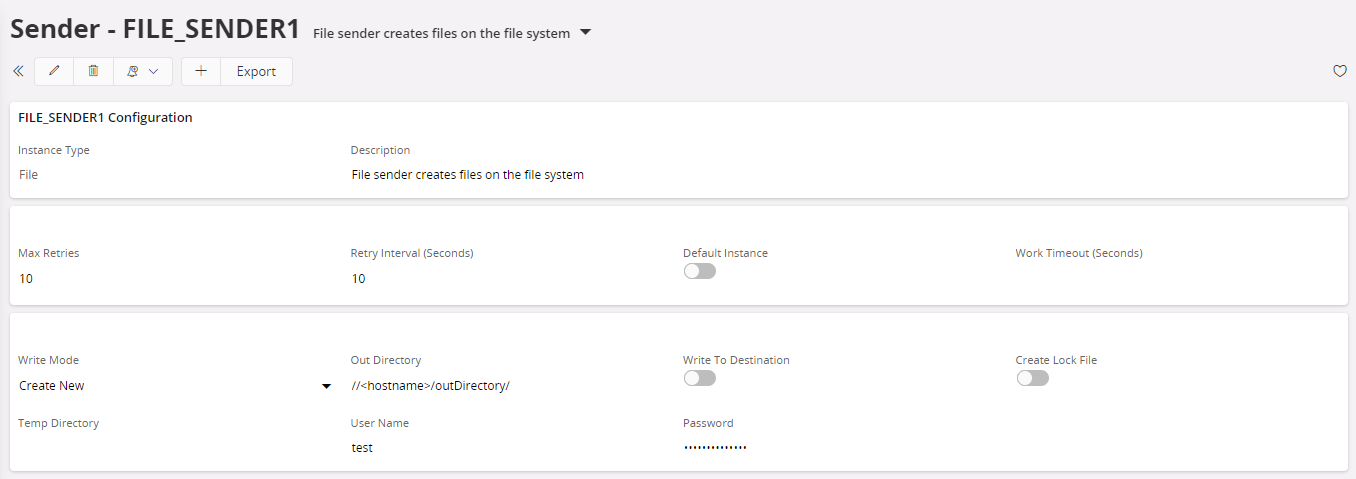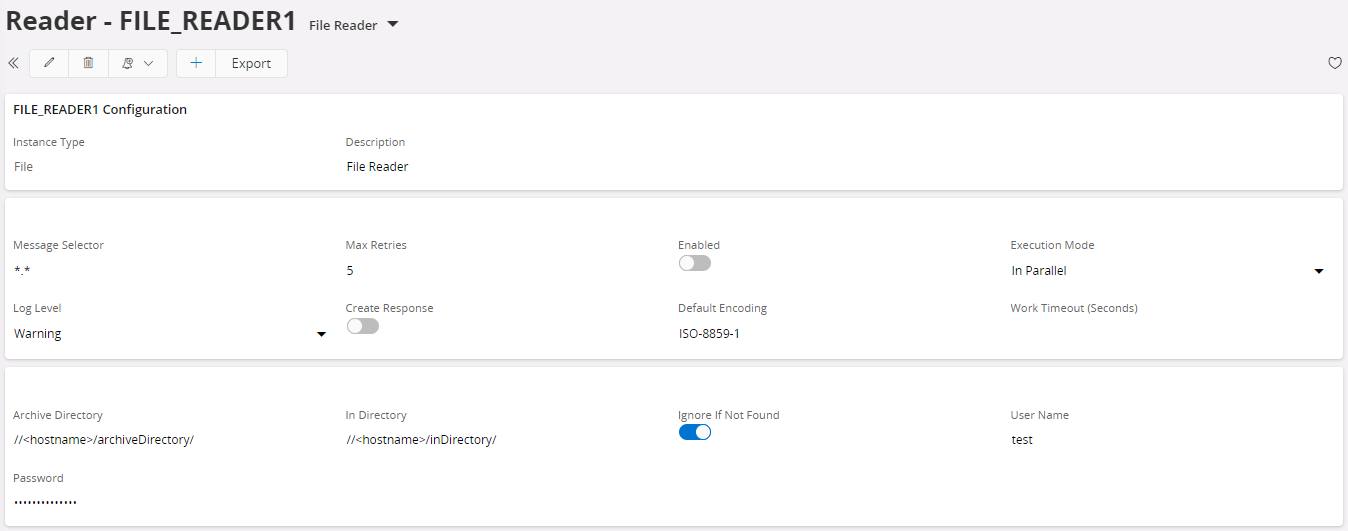Configure the File Transport Connector¶
The File transport connector makes it possible to send and receive files from and to IFS Cloud.
The File Reader scans an IN directory for messages in any format and executes them.
The File Sender has the ability to send files in different xml-formats or plain text to an OUT directory.
For the File Reader/Sender to access the directory, it needs to be shared with the user account mentioned in the Reader/Sender configurations.
Note: This page explains configuration based on default instances FILE_SENDER1 and FILE_READER1, but there is no difference in configuration of arbitrary File Reader or File Sender.
Note: If the user does not have write permission to create this folder structure in Unix environments, it should be created manually at the first time. After that the full access rights to the normal user should be granted.
Note: File Connectors will only be working with On-Prem Customers. File Readers/Senders do not work in a cloud installation.
Note: File Connector uses SMB protocol and it does not support SMB1. It only supports SMB2/3.
File Sender specific parameters¶

- WRITE_MODE
Defines if the sender can overwrite existing files or creates new ones with unique ID in the file name. - OUT_DIRECTORY
Root directory to which the sender writes files. You should enter the full shared path including the machine name (FQDN) or IP Address. - WRITE_TO_DESTINATION
If ticked the file sender will write files directly to the folder specified in OUT_DIRECTORY. Otherwise the sender will write files to a temporary folder and when finished writing move the files to the folder specified in OUT_DIRECTORY. - CREATE_LOCK_FILE
If ticked and also WRITE_TO_DESTINATION is ticked, the file sender will create a file with the same name but ending with.LOCKbefore starting to write a file. When the file is written the lock file is removed. - TEMP_DIRECTORY
Temporary directory that is used if WRITE_TO_DESTINATION is not ticked. If thetempdirectory is empty, subdirectory in OUT_DIRECTORY will be used. You should enter the full shared path including the machine name (FQDN) or IP Address. -
USER_NAME
User name of a User's account that can have access to the shared OUT directory. -
PASSWORD
Password of the User's account that can have access to the shared OUT directory.
Additional parameters are specified on Routing Address for Destination Type File.
File reader specific parameters¶

- IN_DIRECTORY
Directory from which the reader is reading files. You should enter the full shared path including the machine name (FQDN) or IP Address. - ARCHIVE_DIRECTORY
If specified, the reader will move the successfully processed files to this directory rather then deleting them. You should enter the full shared path including the machine name (FQDN) or IP Address. - IGNORE_IF_NOT_FOUND
If ticked, read retry of a file that no longer exists will be ignored. Such situation can arise if the file has been removed or changed after it has been listed but before it has been read. See also file based reader considerations. If un-ticked a read attempt of a file that not exists will result in a failure leaving the corresponding entry in Connect Reader Queue with statusRead Failed. - USER_NAME
User name of a User's account that can have access to the shared OUT directory. - PASSWORD
Password of the User's account that can have access to the shared OUT directory.
How to create new instances of the File Connector¶
It's possible to create new instances of the File Reader Transport Connector provided that they should scan distinct directories (Only one File Reader can scan an in-directory).